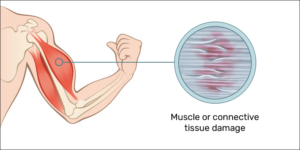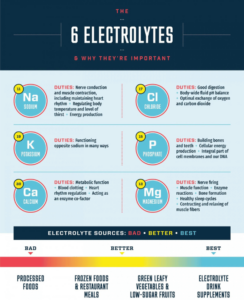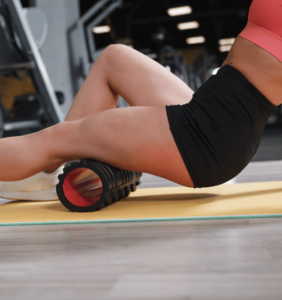If you’ve ever woken up the day after a tough workout – or worse, two days after a workout – feeling like you got hit by a truck, you’ve experienced Delayed Onset Muscle Soreness (DOMS). It’s that deep, aching muscle pain that sets in 24-72 hours post-exercise, making stairs, chairs, toilets, and the simplest movements feel like a serious challenge.
Anyone who trains is familiar with the feeling, but what exactly is DOMS? Why does it take so long? Does it mean you had a good workout? And what everyone really wants to know is, how can you reduce its impact so you’re not sidelined for days? Let’s break it all down.
What Causes DOMS?
Many people assume that lactic acid buildup is to blame for soreness, but that’s actually a myth. Lactic acid is cleared from your muscles within an hour after exercise. The real culprit behind DOMS is microscopic muscle damage – tiny tears in muscle fibers that lead to inflammation and discomfort as they repair and grow stronger.
DOMS is particularly common when:
- You start a new workout program or increase intensity.
- You incorporate eccentric movements (like the downward phase of a squat or slow negatives in lifting).
- You push muscles to fatigue with high resistance or volume.
- You engage in activities that are abnormal for your day-to-day life, like hiking, climbing, or sprinting.

The soreness is part of the adaptation process – your body is essentially remodeling itself to be stronger and more resilient for next time.
Is DOMS a Sign of a Good Workout?
Sometimes, but not necessarily. While some muscle soreness is expected when challenging your body, excessive DOMS doesn’t always indicate progress. In fact, it can be counterproductive in certain circumstances. Severe DOMS can limit mobility, interfere with training consistency, and even increase injury risk if you push through it improperly.
A good workout should challenge your muscles, but you don’t need to be limping for days to prove it was effective. Performance improvements, not soreness, are the best gauge of progress.
How To Reduce DOMS And Speed Up Recovery
While you unfortunately can’t completely eliminate DOMS, you can definitely manage it more effectively to recover faster and, in turn, train more consistently. Here’s how:
Prioritize Proper Warm-Ups

Jumping straight into intense exercise without preparing your muscles is a recipe for more severe DOMS. A solid warm-up should include:
- Dynamic stretching (leg swings, arm circles, lunges)
- Gradual movement progression (light cardio, bodyweight exercises before weights, and lighter sets before heavy working sets)
Cool Down And Stretch Post-Workout
While stretching won’t prevent DOMS entirely, it can help alleviate stiffness and promote circulation. A mix of static stretching and foam rolling post-workout can improve mobility and reduce muscle tightness.
Stay Hydrated
Dehydration can make muscle soreness feel worse, like a lot worse. Water helps flush out metabolic waste and keeps tissues supple. Electrolytes (like magnesium, sodium, and potassium) also play a role in muscle function and recovery as well as proper hydration.
helps flush out metabolic waste and keeps tissues supple. Electrolytes (like magnesium, sodium, and potassium) also play a role in muscle function and recovery as well as proper hydration.
Optimize Nutrition For Recovery
Your muscles need fuel to repair and rebuild. Focus on:
- Protein (high-quality beef, chicken, fish, eggs, bioavailable plant-based sources) to aid muscle repair
- Carbs to replenish glycogen stores
- Healthy fats for reducing inflammation (avocados, nuts, olive oil, omega-3s)
- Antioxidant-rich foods (berries, turmeric, ginger) to combat inflammation
Try Active Recovery
Ironically, one of the best ways to ease soreness is to keep moving. Lower-intensity activities, like walking, swimming, yoga, or light cycling, can improve circulation and help muscles recover faster.
Lower-intensity activities, like walking, swimming, yoga, or light cycling, can improve circulation and help muscles recover faster.
Use Recovery Tools
- Foam rolling and massage: Helps break up muscle adhesions and improve blood flow.
- Cold therapy (ice baths, cryotherapy): Can reduce inflammation, though research is mixed on its long-term benefits (particularly when looking at systemic fatigue and muscle-building goals).
- Heat therapy (hot baths, saunas): Helps relax tight muscles and improve circulation.
Sleep Like It’s Your Job
Muscle recovery happens primarily during sleep. Aim for at least 7-9 hours of quality sleep per night to promote growth hormone production and tissue repair. Be sure to get your room dark, cold, and free from tech, also be careful with your caffeine intake.
Consider Supplements
Some supplements may help reduce muscle damage and soreness, including:
- Creatine: Known to aid muscle recovery and reduce soreness.
- BCAAs (Branched-Chain Amino Acids): Can reduce muscle breakdown.
- Tart Cherry Juice: Contains antioxidants that help with inflammation.
- Magnesium: Helps relax muscles and reduce cramps.
Should You Train With DOMS?
If you have mild soreness, light movement can actually help speed up recovery. However, if you’re experiencing severe DOMS – where even basic movements feel painful – it’s best to give those muscles a break or at least opt to focus on different muscle groups.
Listen to your body. Overtraining can lead to chronic fatigue, increased injury risk, and diminished gains. Balance is key.
How Long Does DOMS Last?
DOMS typically peaks within 24-72 hours and gradually subsides. If soreness lasts longer than a week or is accompanied by severe swelling, bruising, or weakness, it could be a sign of a more serious injury (like rhabdomyolysis or muscle strain) that requires deeper recovery or even medical attention.
Debunking Common Myths About DOMS
DOMS is surrounded by a lot of misinformation. Let’s clear up a few myths:
- Myth: More soreness means more muscle growth.
- Reality: Strength and size gains depend on progressive overload and proper recovery, not soreness.

- Reality: Strength and size gains depend on progressive overload and proper recovery, not soreness.
- Myth: You should avoid training when sore.
- Reality: Light movement can actually help alleviate soreness and improve circulation.
- Myth: Pain relievers are the best fix for DOMS.
- Reality: While NSAIDs can reduce discomfort, they may also interfere with muscle recovery if overused.
- Myth: Static stretching prevents soreness.
- Reality: Stretching is great for flexibility but has little impact on DOMS prevention.
Final Thoughts
DOMS is a natural part of training, but excessive soreness can interfere with consistency and performance. By understanding what causes it, how to manage it, and when to push through or back off, you can train smarter and recover faster.
Instead of chasing soreness, focus on progressive overload, proper nutrition, and recovery strategies. That’s the real key to sustainable fitness and performance.
Have you found any game-changing recovery methods for dealing with DOMS? Share your experiences in the comments!








